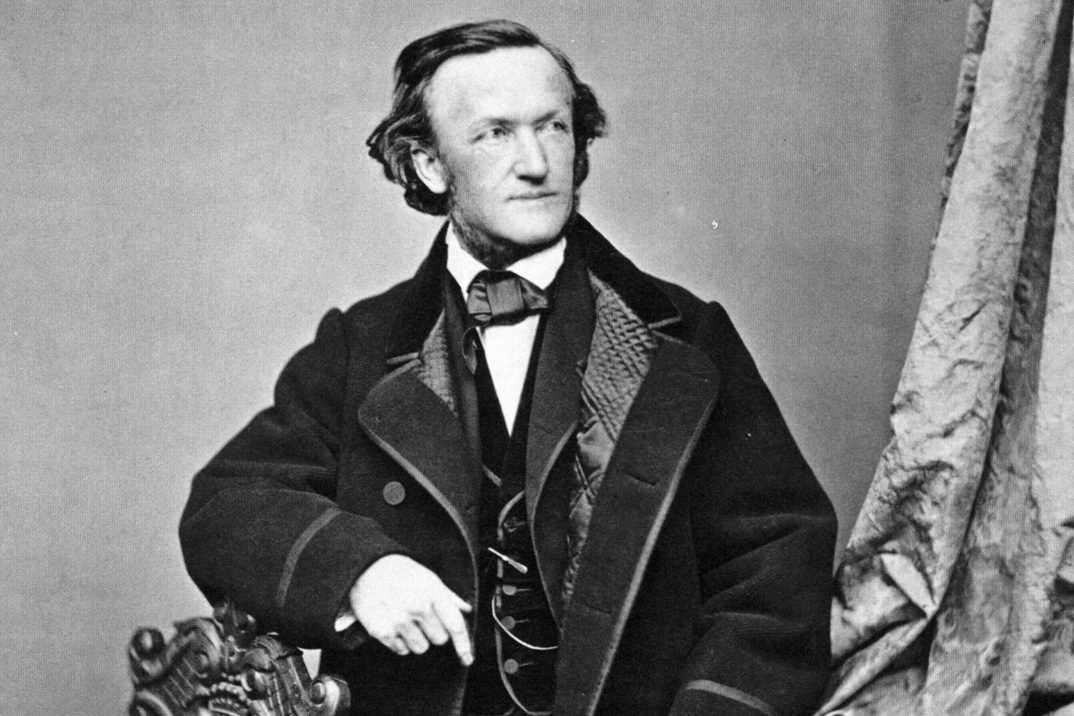So far in 2016, 714 people have been shot by police, 174 of which were black. This means that 24% of people shot and killed by police were black despite the fact that only 13.3% of the United State’s population is black. Race, therefore, is a crucial lens through which we examine policing. A new lens was added, however, with the shooting death of Terence Crutcher on September 16.
An APP(le) a Day: Can Smartphones Provide Smart Medical Advice?
I am not going to shock anyone by stating that we live in a time where distrust of government is high, where people believe that they need to ‘take back’ whatever they feel needs taking back. This opinion runs especially strong in matters surrounding healthcare, where people question a range of issues, including: universal insurance, low cost pharmaceuticals, the efficacy of particular medical tests, and autonomy as regards end of life (and other medical) decisions.
Continue reading “An APP(le) a Day: Can Smartphones Provide Smart Medical Advice?”
Censoring Richard Wagner
The Romantic Era of music brought us some of the most beloved minds in Western music we have ever known. Beethoven, Verdi, Puccini, Chopin – the list could go on and on. Following Beethoven’s brilliant instrumental music legacy, however, one German composer’s ingenuity stood out above the rest – Richard Wagner. While he was alive, Wagner was the single most popular composer in Germany. Even today, Wagner is one of the most celebrated composers in all of Western music history, and his operas are still performed worldwide. Unfortunately, however, his legacy has been tarnished by his radical anti-Semitic beliefs which were translated into many of his operas. Questions about the ethicality of performing his art in a modern setting have long been debated by the classical music community.
Lab-Grown Meat: Is it Kosher?
The idea of meat grown in a laboratory is not a new one. Winston Churchill even shared this vision as far back as 1931, saying “Fifty years hence, we shall escape the absurdity of growing a whole chicken in order to eat the breast or the wing, by growing these parts separately in a suitable medium.” As Churchill predicted, in recent years this once far-fetched vision has turned into an imminent reality. Lab-grown meat is created through the process of collecting cells from a live or recently killed animal and replicating the cells in a scientific setting. The current technology is similar to “cutting off a salamander’s tail and letting it grow back.”
Is Infrastructure an Ethical Obligation?
It’s no debate that American infrastructure has been deteriorating. Across the country, bridges are collapsing, roads are riddled with potholes, schools have chipping paint; even the United States House of Representatives had lead in their water this summer. During their campaigns, both Hillary Clinton and Donald Trump have declared their intentions to drastically increase spending on infrastructure if they are elected to the presidency. Clinton announced that her administration would spend $250 billion on infrastructure over the next five years, paid for by a business tax on companies with assets abroad. In response, Trump stated he would double Clinton’s proposed investment by borrowing funds via the sale of government bonds. Numerous economists and bipartisan politicians have agreed with both candidates – America has an infrastructure problem that needs to be addressed, and soon.
Brexit: Hyperglobalization and the Globalization of Nationalism
“The specter of Brexit is in all of our societies,” cautions Alexander Betts in a TED talk in July. What is “Brexit”? Brexit was a vote held on June 23rd by the peoples of the United Kingdom (UK) to decide whether their country was to stay or leave the European Union (EU): a political and economic union composed of 28 member states. Voters’ main motivation to leave the EU was due to concerns over immigration, more specifically, their concerns over an increasing amount of refugees entering the UK. In the aftermath of Brexit, the election been labeled as a “rejection of globalisation.” What does this mean?
Continue reading “Brexit: Hyperglobalization and the Globalization of Nationalism”
Laughing at, or with, Hitler?
When you ask people the meaning of learning history, the most of them will say, “so that we can learn from the mistakes we made in the past and never repeat them again.” According to this reasoning, one will also say, “if Hitler were alive today, we would never support him.”
The Ivory Trade: Ban or Regulate?
The United Nations’ Convention on International Trade and Endangered Species (CITES) will begin on September 24th in Johannesburg, South Africa. The hot topic at the convention will be lifting the ban on the ivory trade that was imposed in 1989. Botswana has been the most recent country to speak out against the ban and to side with fellow African countries, such as Kenya and Tanzania. Botswana carries heavy influence in the decision because it is home to the world’s largest population of elephants. Along with South Africa, Namibia and Zimbabwe are some of the larger players in the African ring to support lifting the ban. They are in favor of the economic benefits that come with sales of this natural resource. They will offer a proposal at the conference to lift the ban on the sale of legal ivory. China and Japan also play a large role because of the sheer amount of ivory that finds its way into their borders.
Debating The Dakota Access Pipeline
Making America more independent in its energy supply has long been a goal for politicians, environmentalists and the oil industry alike. However, debates over the safety and efficacy of interstate crude oil pipelines will only continue over the recent events surrounding the Dakota Access Pipeline.
Absent Perpetrator and Action-Less Bystander in East Chicago
This article has a set of discussion questions tailored for classroom use. Click here to download them. To see a full list of articles with discussion questions and other resources, visit our “Educational Resources” page.
The small Indiana town of East Chicago sits roughly 25 miles southeast of downtown Chicago. In late July, East Chicago’s mayor and the Environmental Protection Agency began informing residents that their soil had been contaminated with lead since at least 2014. But it was only a few weeks ago that the city began the process of evacuating nearly 1200 residents out of their housing complexes. The reason for this evacuation coincides with the rich industrial history of East Chicago: the smelting of lead.
Like many cities near the northernmost Indiana-Illinois border, East Chicago was at the heart of the Industrial Revolution. Known for not only its steel production but also its large population of immigrants, East Chicago was once hailed as “The Arsenal of America,” and proof that America was truly a melting pot. East Chicago’s present, however, looks very different than its past.The median household income of East Chicago is over $20,000 less than the Indiana average. On top of economic hardship, East Chicago residents are facing an environmental health crisis.
Lead is one of the most heavily regulated pollutants in the United States, with 7 major environmental policies monitoring its presence in air, water, soil and buildings. Despite the definite confidence that lead is toxic to humans and other animals, many industrial processes once used it heavily. In fact, between 1920 and 1985, East Chicago was home to two different lead refineries, U.S.S. Lead and Anaconda Lead. Though Anaconda Lead shut down in 1936, and U.S.S. Lead in 1985, an inspection by the EPA found the area around each factory to be toxic enough to potentially qualify as a Superfund Site. At this point, U.S.S. Lead’s parent company, Sharon Steel Corp, declared bankruptcy and the EPA did not receive the permission to deem the 72 acre area as a Superfund Site. The EPA finally declared the area a Superfund Site 17 years later, in 2009.
Since the discovery of lead contamination, the EPA has sued U.S.S. Lead twice, once in 1991 and again in 2012, though the ownership of U.S.S. Lead fell under the title of the Atlantic Richfield Company and E.I. Du Pont de Nemours and Co. During both of these lawsuits, and the time in between, residents of a 346-unit housing complex built in the 1970’s were actually living on the contaminated soil, with no knowledge of their proximity to toxic levels of lead. To put that in perspective, two entire generations of people were exposed to high levels of lead – in some areas, 228 times the EPA’s maximum level of safe exposure.
The situation in East Chicago is a crisis that demands justice, but who is at fault? The EPA states its mission “is to protect human health and the environment.” The EPA has been aware of dangerous levels of lead in East Chicago’s soil for over two decades, but has failed to begin cleaning up the site at all. Some may point out that this stems from the complicated process of declaring an area as a Superfund priority. However, it appears as though the EPA simply gave up or forgot about the area for nearly 20 years, despite the immediate threat it posed to human health. In addition, between 1992 and 2009, the EPA declared four additional areas as Superfund Sites in Indiana, 3 of which were less toxic than the U.S.S. Site. Every one of these sites – Terre Haute, Elkhart, Evansville, and Westfield – has a higher median household income and percentage of white citizens than East Chicago. Is it fair to say that the EPA not only ignored this public health crisis, but did so because of institutional racism and classism?
On the other hand, some might blame the very companies that are responsible for contaminating the area as most responsible. After all, if it wasn’t for U.S.S. Lead and Anaconda Lead, wouldn’t the area be safe for habitation? Even though lead was not heavily regulated until 1992, lead has been known to be a toxic substance since the 19th century. Mishandling a known toxic substance might be reason enough to blame only the lead refineries. Additionally, it took U.S.S. Lead’s subsidiaries two years to respond and settle the 2012 lawsuit with the EPA. Some might point out that neither company that polluted the area still exists, and it is nearly impossible to pin blame when U.S.S. Lead has changed ownership so many times. However, isn’t the same argument valid with the EPA as well? Since 1992, the EPA has had 14 different head administrators.
Thankfully, the EPA’s 2012 lawsuit against Atlantic Richfield Company and E.I. Du Pont de Nemours and Co. resulted in a $26 million settlement to begin cleaning up the area. Unfortunately, irreversible damage has already been done to citizens of East Chicago. Who is more morally corrupt: the perpetrator or the action-less bystander? How can we hold entities responsible for causing or allowing environmental damage and human health crises to occur? Is it possible or right to seek justice when the perpetrators of such acts are not still in power or even alive?
Perhaps the problem lies in attempting to hold people accountable for their actions, and lack thereof, of multiple entities over decades. The longevity of a crime should not determine its likelihood of meeting justice, but that seems to be the problem.The perpetrator is absent from the crime and there are too many action-less bystanders to blame. Ironically, the people of East Chicago have been blindly suffering for too long to find peace in holding anyone accountable.
On Morally Supporting Abstinence-Based Sex Ed
The Atlantic published an article titled “Sex Ed Without the Sex” this past week by writer Olga Khazen. In that article, Khazen traced current sexual education practices in the city of Odessa, Texas. Odessa represents the widely used ideology of current sex ed courses throughout the United States, which is laden with conservative, Phyllis Schlafly-esque teachings. At this time, only 13 states require sex ed lessons to include medically accurate facts, while less than half actually require sex ed to be taught in school.
Continue reading “On Morally Supporting Abstinence-Based Sex Ed”
Can Emotions Be Wrong?
We can act wrongly: we may behave in ways that are unkind, inconsiderate, or selfish. Can our emotions be wrong too? Are there things that we shouldn’t feel?
Classical Music’s Accessibility Dilemma
As music becomes increasingly accessible in the digital age through means such as Spotify, traditional live-music presentations of classical music have taken a bit of a beating. Even long-standing, socially prominent venues have recently faced financial turbulence. In 2014, the Metropolitan Opera found itself in a $22 million deficit due to shortcomings in both its ticket sales and donor contributions. Desperate to attract more audiences in order to keep afloat, the greatest modern minds in classical music have been forced to rethink how to market classical music to make it consistently appealing to a broad range of audiences. In the process, ethical questions have risen concerning the preservation of the art – is the integrity of classical music being sacrificed as the industry strive to create new events that will ignite new interest?
Our Views of Women in the Military Demand Complexity
Donald Trump’s reemerged tweet about sexual assault in the military has brought the topic of women’s roles, rights, and risks in the armed forces to the forefront of discussion. In his recent interview with Matt Lauer, Trump defended his tweet from May 2013, which reads: “26,000 unreported sexual assaults in the military-only 238 convictions. What did these geniuses expect when they put men & women together.” His logic suggests that the creation of an environment in which females and males are mingled—whether it be a place of work, an educational institution, or just plainly the world—naturally encourages sexual assault. This tweet also implies that women are the ones who have been integrated into the military; they are the outsiders; they are the reason that these sexual assaults occur. To understand today’s sentiments toward this issue, we have to look at the history of women in the U.S. military that is so often left out of textbooks.
Continue reading “Our Views of Women in the Military Demand Complexity”
Health Transparency for Presidential Candidates
From Grover Cleveland’s secret oral surgery to First Lady Edith Wilson running the Executive Branch after her husband, Woodrow Wilson, suffered a stroke, the legacy of medical cover-ups among Presidents and candidates continues. This past weekend, Hillary Clinton left a 9/11 memorial early after feeling overheated and dizzy, as well as losing her balance. Clinton’s staff later released that Clinton had been diagnosed with pneumonia the previous Friday and ignored her doctor’s request of a five-day break from the campaign.
Continue reading “Health Transparency for Presidential Candidates”
The Context of Colin Kaepernick’s Protest
During a preseason game between the Green Bay Packers and the San Francisco 49ers on August 26th, people finally noticed what 49ers’ quarterback Colin Kaepernick had been doing all season: sitting during the national anthem and presentation of the flag. In a press conference with the media, he proclaimed, “I am not going to stand up to show pride in a flag for a country that oppresses black people and people of color.”
Continue reading “The Context of Colin Kaepernick’s Protest”
Has Your Newsfeed Hurt Your Mental Health?
Within the past few years, it has become even easier to put up videos on social media instantaneously. So many of those that go viral depict something violent, such as the many horrible instances of police brutality that have made the news this year alone. Though often shocking, disturbing, and tragic, these videos do serve as evidence in cases of violence, and sharing them on Facebook can help spread awareness against the crimes committed in them.
Continue reading “Has Your Newsfeed Hurt Your Mental Health?”
Proprietary Tech’s Environmental Cost
Apple’s product design has always been known for a distinct minimalism. The oft-lauded aesthetic of the company’s products, guided by Chief Design Officer Jony Ive, has become a trademark of the company, birthing some of the world’s most recognizable tech products and influencing a generation of hardware design. The iPhone, a product defined by the clutter of features that its sleek design excludes, has often been the focal point of these efforts, representing Apple’s minimalistic aesthetic.
When One Crisis Fuels Another: The Zika Virus and Bees
With the Zika virus officially entering the United States, panic has ensued in the South. After Congress failed to pass a bill that would provide funding for combatting Zika, many states have taken the fight into their own hands. Following the standard procedure of preventative action, South Carolina began spraying insecticides by plane on Sunday August 28th. The chemical sprayed is called Naled and this is not the first time it has been sprayed in South Carolina, considering the state’s ongoing effort to combat West Nile Virus. However, that was the first time that the insecticide has been sprayed by plane, in order to spread it over a larger area. Though Naled poses no serious risk to human health, it can kill insects other than mosquitos. Beekeepers in Dorchester County, South Carolina found this out the hard way when they woke up to millions of dead bees on the morning of August 29th.
Continue reading “When One Crisis Fuels Another: The Zika Virus and Bees”
What Did Mexico’s Politicians Gain from Trump’s Visit?
Mexico’s Finance Minister, Luis Videgaray, recently resigned. The reason seems to be the events of last Wednesday, September 31st, when Republican Presidential Nominee Donald Trump visited Mexico. The visit was not well received by the Mexican population. Due to their discontent, Videgaray seems to have been forced to resign; he is attributed to have been one of the main supporters and architects of Trump’s visit. Shortly after Videgaray’s resignation, Trump deemed his visit a success since he was able to influence the composition of the Mexican president’s cabinet. Success or failure, these are the events as they unfolded:
Continue reading “What Did Mexico’s Politicians Gain from Trump’s Visit?”
Making Amends: Georgetown University and Slavery
On a Fall day in 1838, a stone’s throw from the Capitol, families were torn apart. Loaded up on boats headed for the Deep South, 272 souls were shipped away to an uncertain future of pain, labor, and separation. This was an everyday occurrence back then; though the international slave trade had been abolished over a quarter of a century earlier, the domestic trade was alive and well, with an estimated 2.5 million enslaved by 1850. However, this case is set apart because the slaves were owned by Georgetown University and were sold to keep the university financially afloat.
Continue reading “Making Amends: Georgetown University and Slavery”
Mother Teresa’s Canonization Controversy
This past week at the Vatican, Pope Francis canonized Mother Teresa, making her officially Saint Teresa of Calcutta in the Catholic tradition. For years, many Catholics have considered the famous nun a pseudo-saint for her dedication to helping the world’s poor.






















